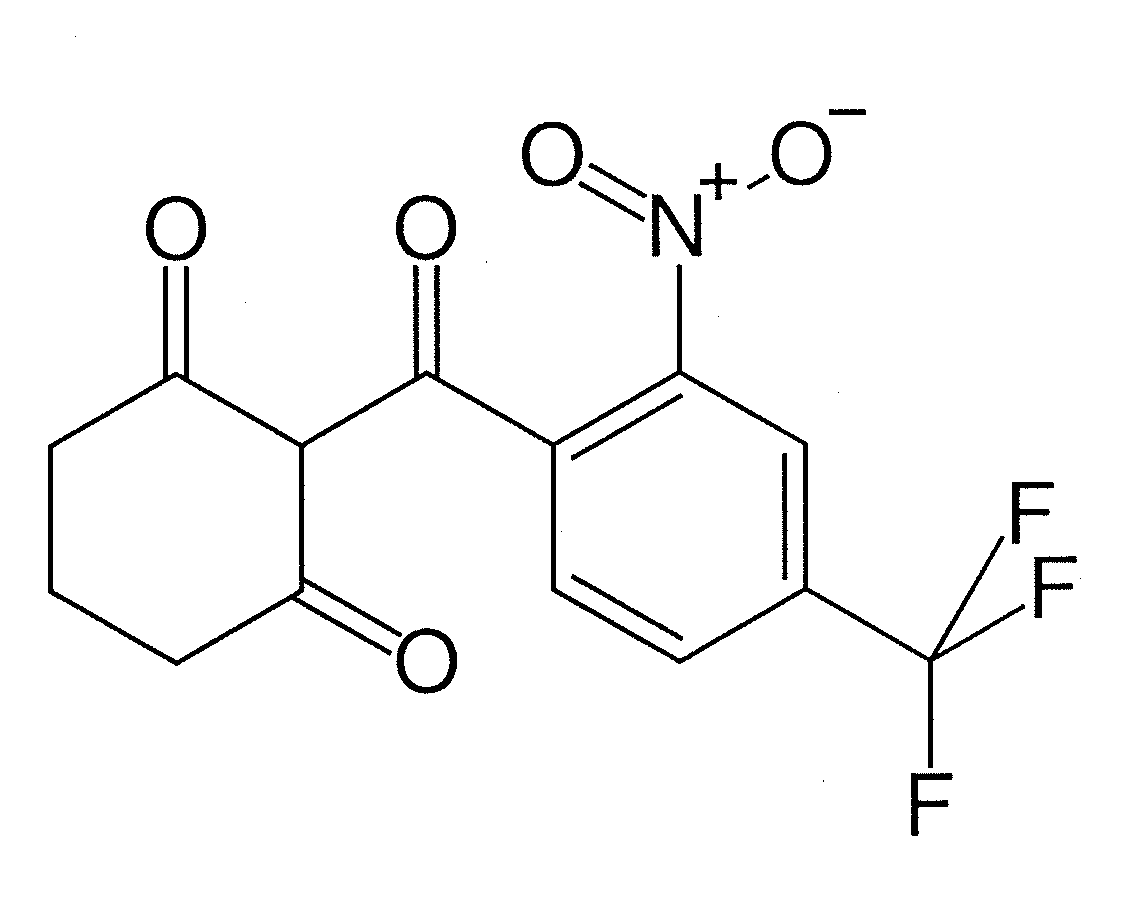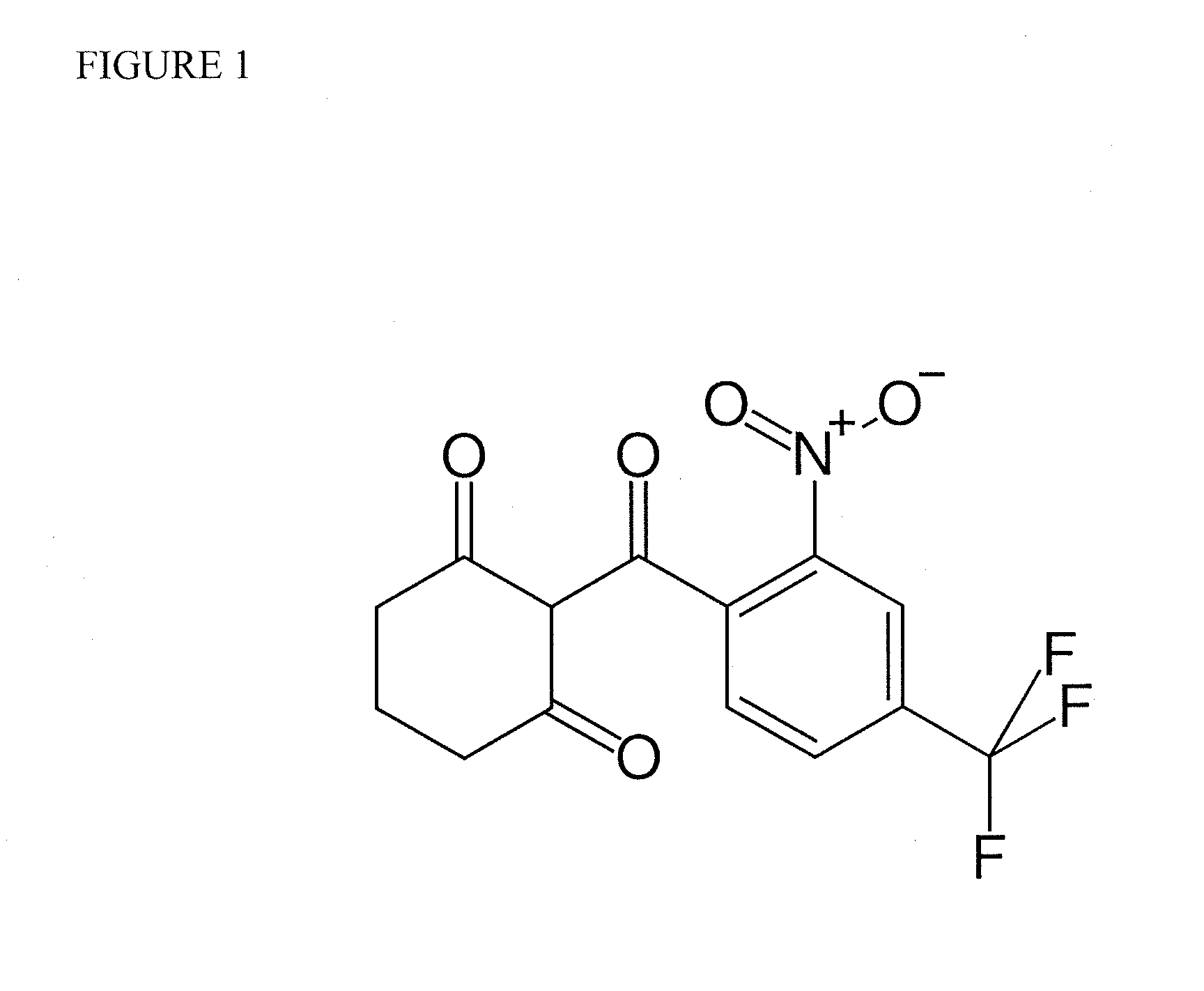Nitisinone for treatment of oculocutaneous/ocular albinism and for increasing pigmentation
a technology for ocular albinism and nitisinone, which is applied in the field of nitisinone for treatment of ocular albinism and for increasing pigmentation, can solve the problems of limited treatment options for albinism, severe impairment of vision, and lack of melanin in fur, scales or feathers, and achieves increased tyrosinase activity, and increased circulating tyrosine levels
- Summary
- Abstract
- Description
- Claims
- Application Information
AI Technical Summary
Benefits of technology
Problems solved by technology
Method used
Image
Examples
example 1
[0063]This example demonstrates tests the effect of clinically-relevant doses of NTBC in a mouse model of oculocutaneous albinism, type 1a, (C57BL / 6J-Tyrc-2J / c-2J)using predefined ocular, systemic and biochemical outcome variables.
[0064]C57BL6 / J-Tyrc-2J / c-2J mice are phenotypically albino due to a G291T (Arg77Leu) mutation in the Tyr gene that is functional null at the protein level (Green, E. L., Mouse News Lett., 49:31 (1973)). These mice have a white coat color and pink eyes, and lack any significant fundus pigmentation. As such, they are a reasonable model for oculocutaneous albinism type OCA1a. Although these mice are completely albino, the mutation in their tyrosinase gene is a missense mutation. This leaves open the possibility that elevated tyrosine may stabilize the enzyme and improve flux through pigment production pathways. To minimize the effect of additional genetic factors on phenotype, both lines of mice used in these experiments are on the same inbred C57BL6 / J backgr...
example 2
[0070]This example demonstrates the effect of clinically-relevant doses of NTBC in a mouse model of oculocutaneous albinism, type OCA1b, (C57BL / 6J-Tyrc-h / c-h, carrying a temperature-sensitive mutation in tyrosinase) using predefined ocular, systemic and biochemical outcome variables.
[0071]The Himalayan mouse line is a mutant C57BL / 6 mouse line which carries a temperature sensitive allele of tyrosinase, Tyrc-h (MGI Accession ID #72456), that spontaneously arose in a C57BL / 6 mouse in 1958, and has since been inbred into the C57BL / 6 background. The maximum activity of the tyrosinase produced from this allele occurs at temperatures below normal body temperature (37° C.), because the mutant protein (c.A1259G, p.H420R) is heat labile. In homozygotes, the first coat is a uniform light tan. At the first molt, the body hair becomes lighter and the ears, nose, tail, and scrotum become dark as in Siamese cats. The eyes are slightly pigmented and appear red. Himalayan mice were housed in standa...
example 3
[0078]In this example, a pediatric patient study for treatment of vision problems associated with oculocutaneous albinism type OCA1b is provided.
[0079]Patient recruitment begins with genotype testing to determine which type of albinism each clinical subject. Patients are screened based on the gene that is mutated, for example, tyrosinase (OCA1), the P protein gene (OCA2), the tyrosinase-related protein-1 (TYRP-1, OCA3), and the MATP gene (OCA4). OCA1-the most common form of OCA in North American Caucasians, can be further divided into those individuals who lack tyrosinase activity (OCA1a) and those who have some residual tyrosinase activity (OCA1b). Clinical molecular testing of the tyrosinase gene is used to identify mutations in patients who meet the clinical criteria for albinism, but who make some pigment. The effect of the mutation on enzymatic activity is determined experimentally.
[0080]Vision assessment of all patients is undertaken to measure visual acuity, contrast sensitiv...
PUM
| Property | Measurement | Unit |
|---|---|---|
| weight gain | aaaaa | aaaaa |
| pH | aaaaa | aaaaa |
| temperature | aaaaa | aaaaa |
Abstract
Description
Claims
Application Information
 Login to View More
Login to View More - R&D
- Intellectual Property
- Life Sciences
- Materials
- Tech Scout
- Unparalleled Data Quality
- Higher Quality Content
- 60% Fewer Hallucinations
Browse by: Latest US Patents, China's latest patents, Technical Efficacy Thesaurus, Application Domain, Technology Topic, Popular Technical Reports.
© 2025 PatSnap. All rights reserved.Legal|Privacy policy|Modern Slavery Act Transparency Statement|Sitemap|About US| Contact US: help@patsnap.com



